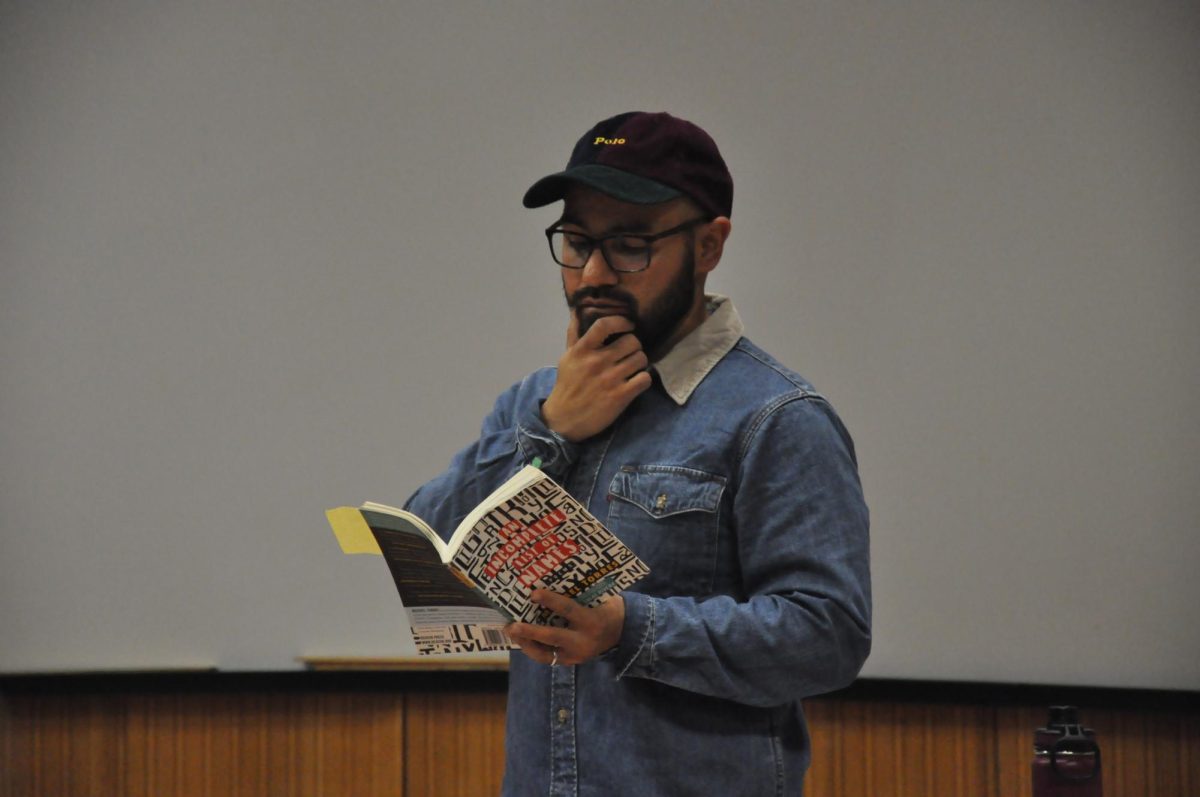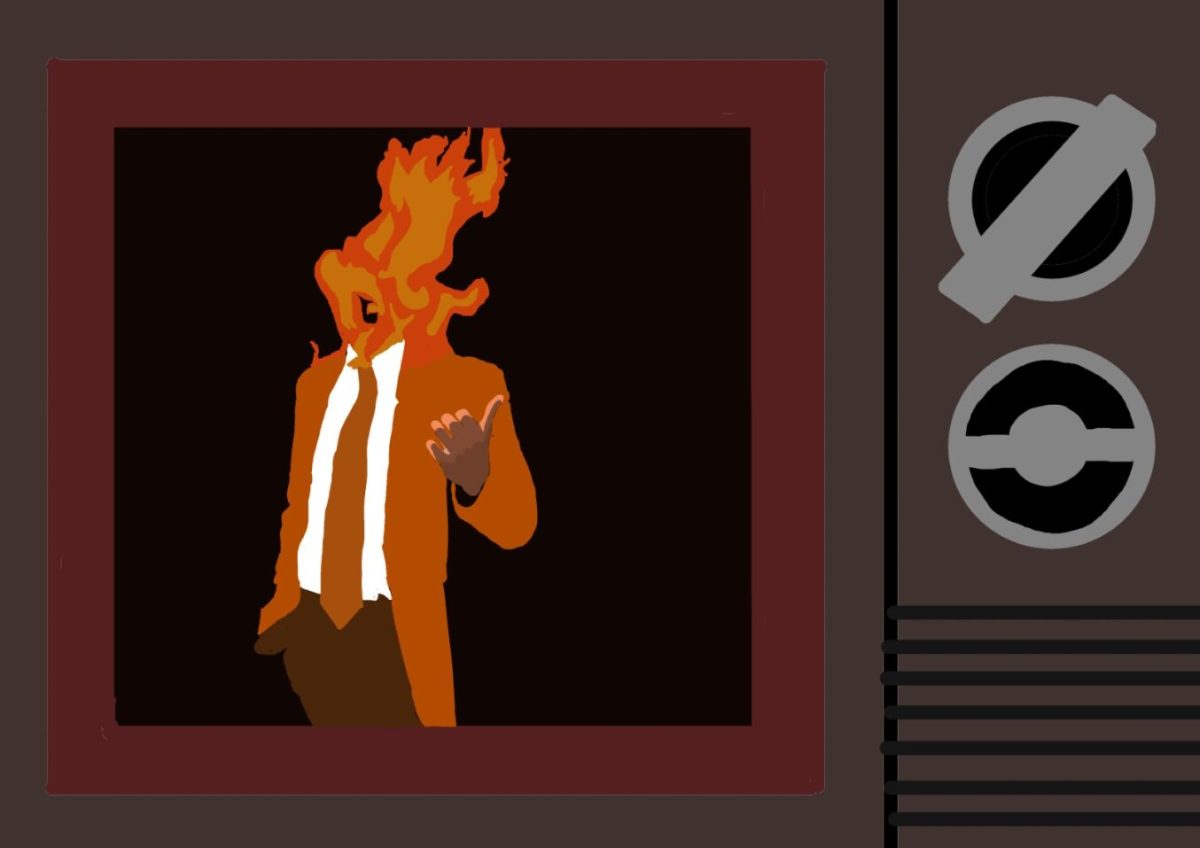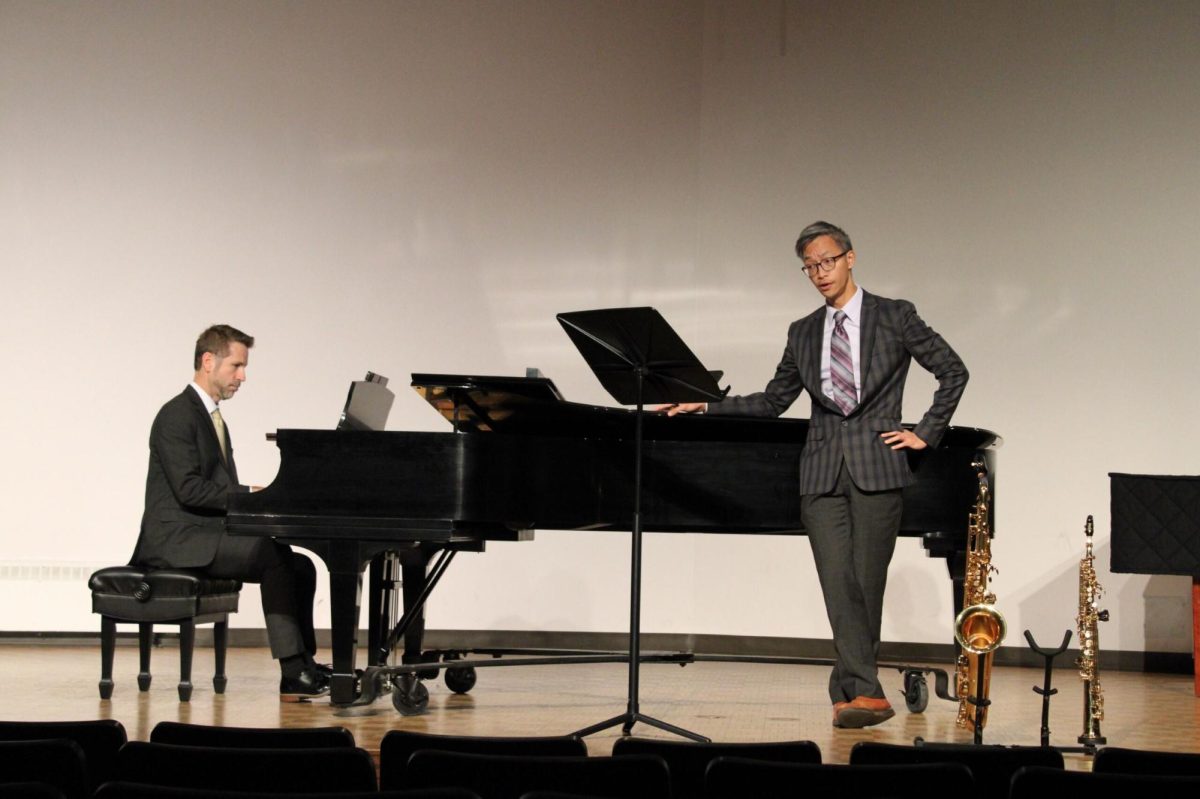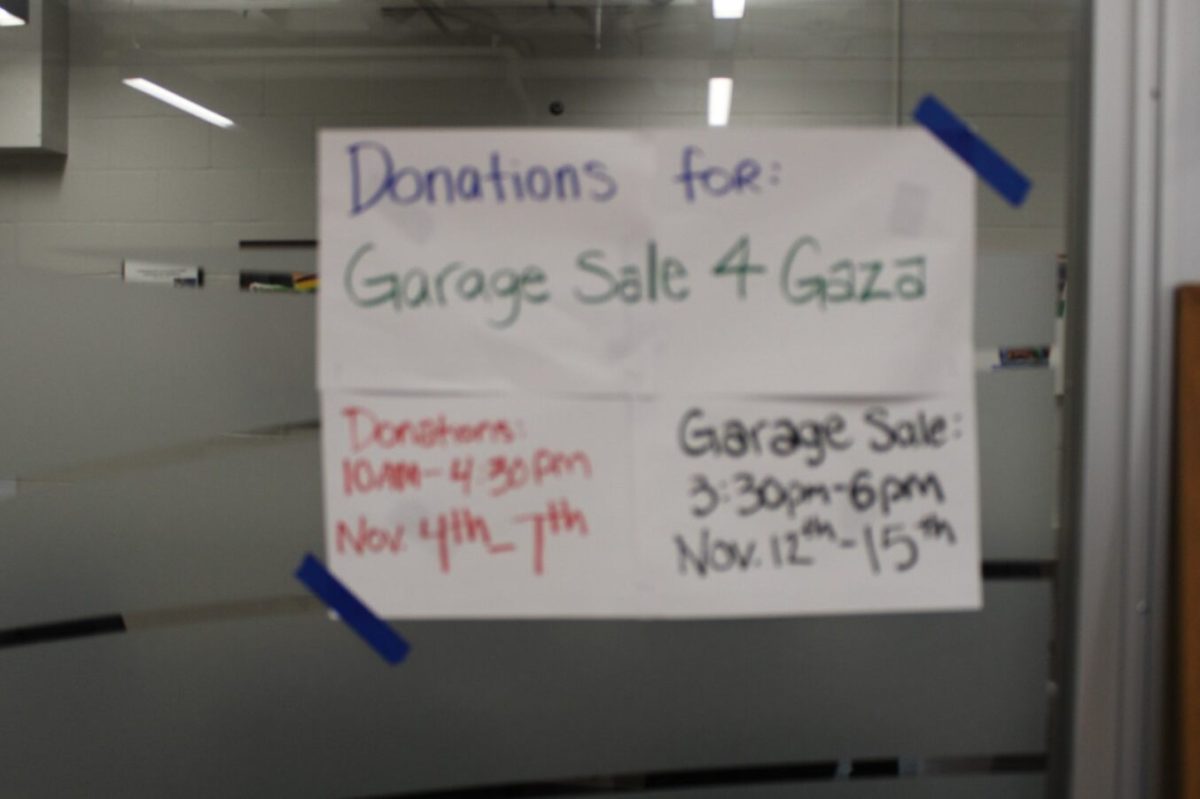Karin Chandler/Winonan
Two presentations: “Math and Art: The Good, the Bad, and the Pretty” and “In the Shadow of Desargnes” demonstrated to students that there are connections between the two often-unrelated subjects.
Annalisa Crannell, a professor from Franklin and Marshall College, said in her presentation that most people think math is scary and art is pretty, yet she finds, “students weren’t scared of math; they were scared of art.” She showed pictures of students’ artwork before and after they learned of the math behind it.
Crannell gave students a bit of art history. Prior to 1509, when linear perspective took off, there wasn’t a lot of it. Linear perspective refers to use of lines to show depth on a flat surface.
“To get depth perspective, you need a lot of lines. If I add more lines, you would be more convinced that they’re the same size and shape,” Crannell said.
Hoping for audience participation, Crannell had everyone put their hands at the side of their head. Then she asked “Which is bigger? Your hands or your head?” Then she had them put their hands in front of their face and said, “Look at my head. Which is bigger? My head or your hands.” Since Crannell was further away, her head was smaller than the hands of the people in the audience.
Crannell discussed vanishing points, and how to determine where they are. Vanishing lines are parallel to the actual lines of the picture. She gave an example with beach towels; the towels looked better when vanishing points were far away.
“It depends on where the artist is and where the vanishing point is. You can change the world around you and you’re not even using drugs,” she said.
“Vanishing points were used in art before they really knew the math behind it,” Mallory Baxter, a student, said.
Some students found this lecture was an example of how mathematics can apply to many things.
“It shows another example of how math applies to so many things in everyday life that many people may take for granted,” Andrea Levering, a student, said.
Some students found the connection between math and art to be enlightening. Sam Sayer, a student, said, “It was interesting to see how art and math could be used together to make some amazing drawings.”
Jacqui Jepson, a student, agreed. “It’s good to see from the art perspective because we don’t usually see math from other perspectives.”
The lectures were sponsored by Winona State University’s department of mathematics and statistics.
Contact Karin at
[email protected]















































